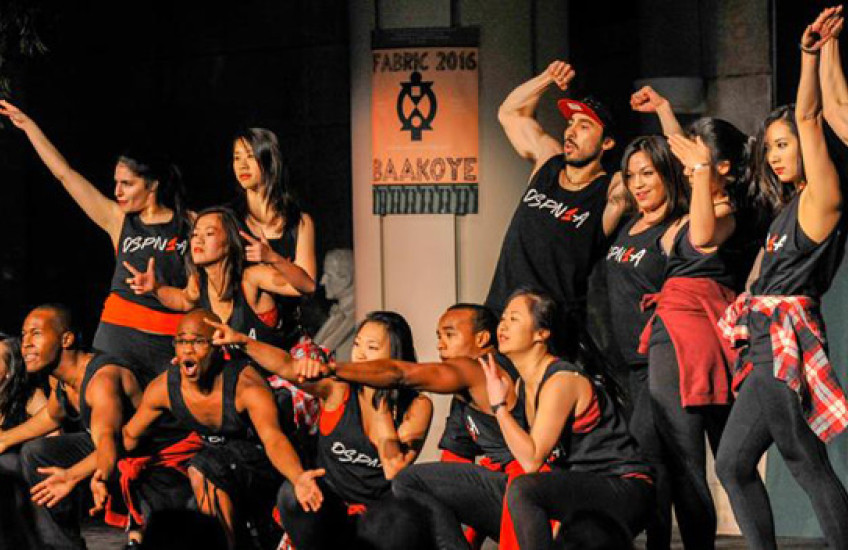History, humor, passion and fashion were center stage in the Harvard Medical School and School of Dental Medicine 16th annual FABRIC performance April 15.
HMS and HSDM students sang, danced, rapped and demonstrated taekwondo in a show presented by first-year students to the newly accepted members of the Class of 2020.
Before the thundering rhythms of pounding feet and pulsating music brought the clapping audience to its feet, however, co-creative director Danial Ceasar made it clear what FABRIC was—and was not.
“Here at HMS the African diaspora has immense value.”—Danial Ceasar
“This is not meant to be a talent show,” he told people gathered in the atrium of the Tosteson Medical Education Center. “It is a celebration of the African diaspora and all of its creativity and influence. For far too long they have been underappreciated and ignored.”
Sixteen years ago, FABRIC began and over the years its performances have highlighted the multiple art forms that have emerged from Africa.
“Here at HMS the African diaspora has immense value,” Ceasar said.
This year, the students chose as their theme “Baakoye,” which means “oneness” in the Akan language of Ghana. This theme was meant to illustrate to accepted students the importance of unity and togetherness in the face of challenges and adversity.
From Burmese rap to salsa to Kpop (Korean pop) to a new (and imaginary) malady called Bieber pyrexia seen in a student-produced video, the students entertained an enthusiastic crowd while painting a picture of their own HMS and HSDM experiences.
“We are each other’s allies here.”—Pooja Mehta
“Each performance is a symbol of solidarity and celebration,” Pooja Mehta, one of the show’s two creative directors, said. “We are each other’s allies here.”
Music and dance from Africa and also India, Venezuela, Vietnam, Syria, the Caribbean and California filled the stage. Some student performers just began practicing taekwondo or singing a capella in the past year.
A swirl of students wearing traditional garb from their home countries—or from a classmate’s country—acted as models. They even mocked their own student apparel with nods to athletic wear and scrubs.
Interviewed after the performance, the show’s executive producer and creative directors reflected on the program and its history.
Mehta said the message sent by White Coats for Black Lives in last year’s show still resonates.
“It sent a strong message about struggle, adversity, injustice and the need for people to stand up and stand together,” she said. “I feel that many of my classmates heard their message, and I hope the Class of 2020 heard that from us as well.”
Preparing for FABRIC 2016 was rewarding, they said.
“It has truly been a beautiful experience, seeing my class come together the way that it has to honor the influence the African diaspora has had on the world, to welcome the Class of 2020, and to make sure that every member of the incoming class feels safe coming to HMS/HSDM and that they have a place here within our community,” Mehta said.
“I would do it again in a heartbeat.”—Chris Liu
Chris Liu, executive producer, said she was so impressed by FABRIC 2015 last year that she felt intimidated at the prospect of pulling off an equally beautiful and powerful program. But she knew she wanted to be involved—even before she came to HMS.
“I would do it again in a heartbeat,” she said.
Ceasar said he was inspired by the rich tradition of FABRIC.
“For many students, FABRIC is the first time that they see that they can truly have a community of people and feel at home at HMS,” he said.
“So many of the upperclassmen that I look up to for advice may not have come if it weren’t for the show,” Ceasar added. “This also gave me an incredible amount of motivation to encourage people to come to HMS.”



